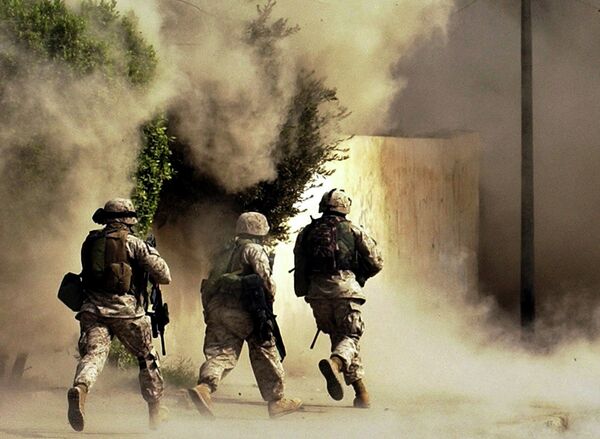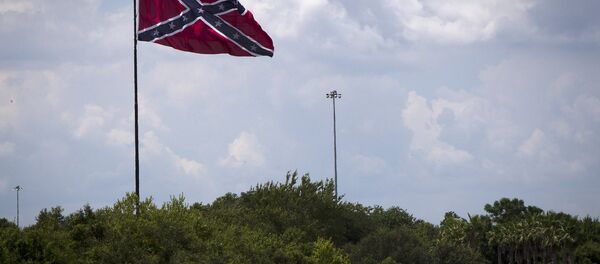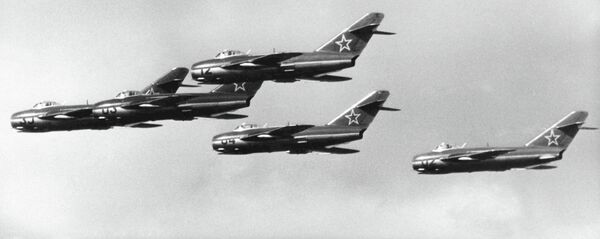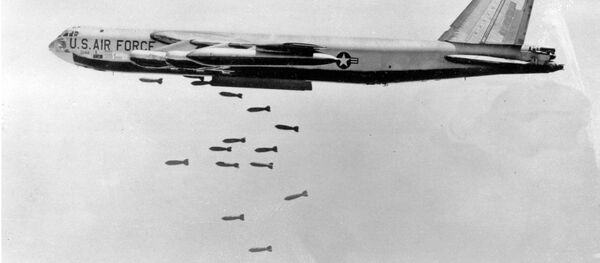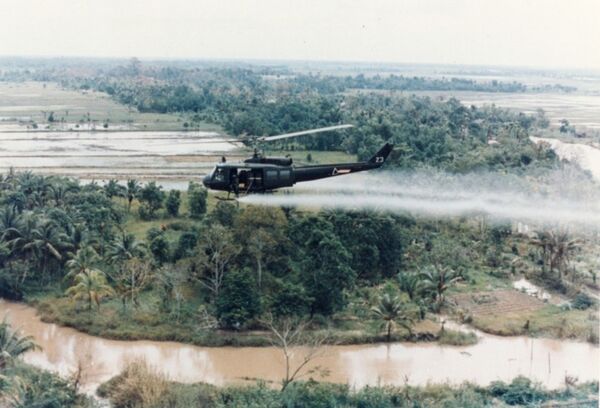The US Army is marking its birthday on Sunday, with the White House issuing a commemorative tweet, and the Army releasing a bland recruitment video. The Pentagon, meanwhile, solemnly marked the occasion with a wreath laying ceremony at Arlington National Cemetery, where over 400,000 soldiers from the Civil War to America’s many foreign wars are buried. In honour of the occasion, Sputnik recalls ten of the Army’s most amazing triumphs and most humiliating defeats.
Today, we recognize 245 years of bravery, commitment, skill and answering the call to serve.
— U.S. Army (@USArmy) June 14, 2020
We are America's Army.#ArmyBday #ServeWithHonor pic.twitter.com/skfWN16XpP
LIVE: @USArmy leaders commemorate the Army’s 245th birthday with a wreath-laying ceremony at @ArlingtonNatl. https://t.co/zTzMNm4TvW
— Department of Defense 🇺🇸 (@DeptofDefense) June 14, 2020
1: Revolutionary War
Undoubtedly the most important of the many battles that would follow it, the Army’s performance in the Revolutionary War of 1775-1783 was perhaps its most spectacular victory, with the militia-turned-soldiers from 13 British colonies in North America banding together under General George Washington’s leadership and ousting the British, at the time the largest and most powerful empire in history. With a little help from French and Spanish forces, as well as American Indian allies, the US Army of 200,000 men total was able defeat some 48,000 Redcoats, the Royal Navy, and some 25,000 British loyalists who took up arms, and establish the American republic. In 1783, the United States and Great Britain signed the Treaty of Paris, and London formally recognized Washington’s status as a sovereign nation.
2: War of 1812
In 1812, with Britain and its allies busy fighting Napoleon in Europe, the US declared war, attempting to annex British holdings in North America (i.e. Canada). Both sides proved unprepared for the conflict, with American men who eagerly took up arms to throw off the yoke of the British three decades earlier unenthusiastic about signing up to fight in a war of aggression. British Canada, meanwhile, was defended by just over 6,000 men. The war quickly turned into a war of position along the vast borders between the US and Canada, with most of the fighting taking place in the Great Lakes region, along with a naval campaign in the Atlantic which included a blockade of the US East Coast. Possibly the most memorable event for both sides was the successful redcoat amphibious invasion of Washington, DC, and the burning of the White House in August 1814. The conflict would claim some 15,000 American and 10,000 British and Loyalist lives, and end in a stalemate. Strategically, however, this was a defeat for the US Army, which failed to make Washington politicians’ dreams of conquering North America a reality. In 1814, the warring parties signed the Treaty of Ghent, with no territorial changes made.
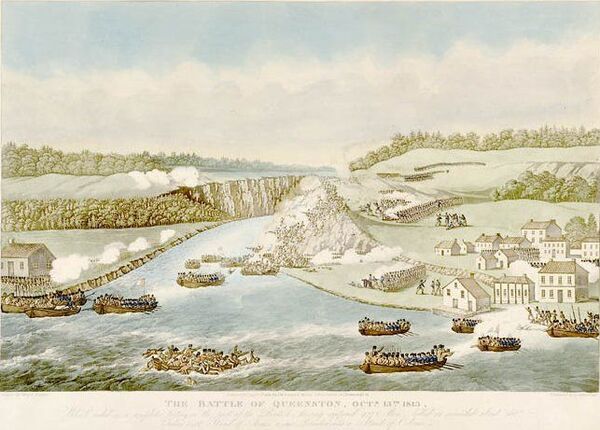
3: Mexican-American War
In 1846, a year after the Republic of Texas’s annexation by the United States, a territorial dispute between the US and Mexico turned into a full-blown war. The war ended in a major victory for the US Army, with Mexico ceding over 1.3 million square km of territory from the Rio Grande River to the Pacific Ocean at the cost of ‘just’ 1,700 US and 5,000 Mexican troops. The Mexican-American War set the stage for turning the US into a true continental economic and military power.
4: Civil War

5: World War I
On April 6, 1917, two and a half years after the beginning of the Great War, Washington entered the conflict after a year-long propaganda campaign by the Wilson administration to convince mostly pro-neutrality Americans to see the need to join the British and French-led conflagration against the Central Powers of Germany, Austria-Hungary and the Ottoman Empire. More than anything, the US Army’s contribution to the war was as a morale builder to relieve the exhausted Western allies, particularly after the Russian Revolution and Russia’s exit from the war in March 1918. Militarily, the US troops helped blunt the German Spring Offensive of March 1918, and took part in the August-November 1918 series of attacks against Germany and Austro-Hungary. Militarily, however, US commanders’ tactics were just as horrific as those of their French, British and German counterparts, with 53,400 of the 4 million+ troops mobilized killed, many of them sent into the meat grinder of trench warfare to be cut down and bled white in frontal assaults on enemy machinegun emplacements.

6: US Intervention in the Russian Civil War
The US military intervention in the Russian Civil War is an important but little-talked aspect of the wider conflict between the ‘White’ forces, their Western financial and political backers, and the fledgling Bolshevik government in territories from the Baltic and the Black Sea all the way to the shores of the Pacific. In September 1918, the United States landed some 5,000 troops in Arkhangelsk, northern Russia in what would become known as the ‘Polar Bear Expedition’. 8,000 more troops had already been deployed in Vladivostok a month earlier. The US joined troops from over half a dozen other nations to try and stop the Reds’ takeover of Russia, but, in the end, proved unsuccessful, with American forces withdrawing from Arkhangelsk in July 1919, and from Vladivostok in 1920. During their deployment, the troops were tasked with guarding local communications lines and railways, transporting goods out of the country as ‘compensation’ for their presence and, occasionally, clashing with the Red Army. All told, the US forces lost 424 men in northern Russia, and 328 more in the Far East. The failed intervention in the Russian Civil War proved one of the contributing factors to Moscow’s distrust of Washington and other Western nations for much of the remainder of the 20th century.
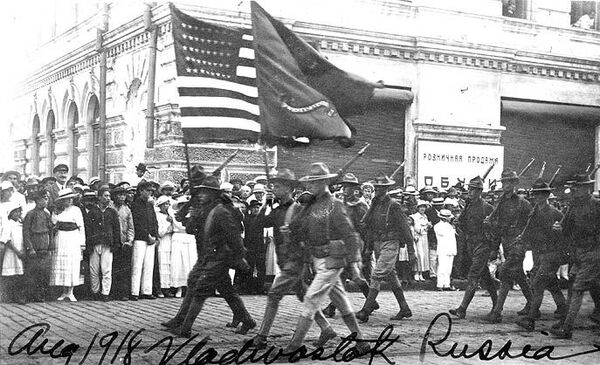
7: World War II
In December 1941, after Japan attacked Pearl Harbor, and Hitler declared war on the USA, Washington joined the Second World War, which to date remains the bloodiest conflict in human history. The US Army joined with the Navy and Air Force in fighting in the North African, European and Pacific theatres, helping to liberate North Africa from Italian and German occupation in 1943, engaging in an island-hopping campaign in the Pacific starting in 1942 after a series of naval engagements, and, in 1943 and 1944, landing troops in southern Italy and France, opening up the Western Front long awaited by the Soviets in the east. The Second World War cost the US 407,000 military dead, with 318,000 of them Army and Air Force men, but also helped establish America as an undisputed superpower in the post-war world, a status it continues to enjoy today.
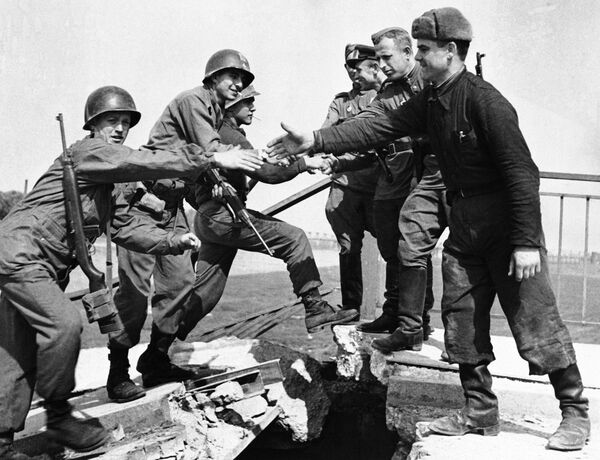
8: Korea
9: Vietnam
10: War on Terror
Following the 9/11 terror attacks in Washington, New York and Pennsylvania, the United States began the largest military and security operation in the modern era, known as the War on Terror, with the US Army playing an active role in this fight. In late 2001, the US intervened in Afghanistan, toppling the Taliban government only to spend the next two decades engaging a slow-burning insurgency. In 2003, the Bush administration used the pretext of the War on Terror to kick off the War in Iraq, another conflict where the US Army easily defeated the enemy army, only to get bogged down in deadly and costly counterinsurgency operations, culminating in the rise of Daesh (ISIS) terrorists in 2014. The War on Terror is a truly global conflict, with US forces intervening in conflicts in Pakistan, Syria, Libya, West Africa, East Africa, Yemen, and the Philippines. By late 2018, the war was estimated to have killed over 507,000 people, including nearly 4,500 US troops in Iraq, and 2,200 in Afghanistan, with 50,000 more injured. Furthermore, despite President Trump’s campaign pledge to stop being the ‘policeman of the world’, the war has yet to end, costing over $6 trillion to date, but filling US defence contractors’ pockets.
